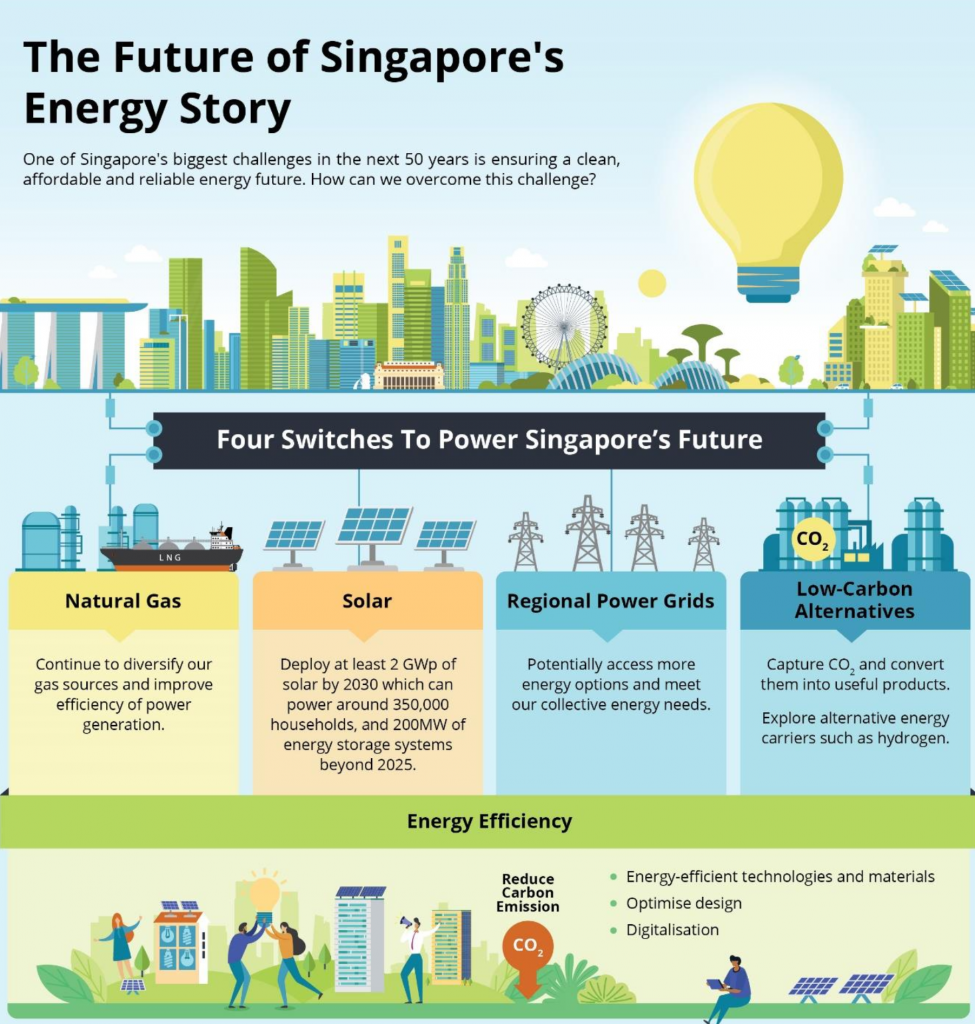WHY SOLAR?
Dealing with climate change is a matter of survival for Singapore. As an island nation, we will be threatened by rising seas and temperatures in the years ahead. We have to decarbonise the economy and reduce emissions so as to do our part under the 2015 Paris Climate Agreement and keep within the safe global warming pathways. With the launch of the Singapore Green Plan 2030 in February 2021, there are plans to take action across all sectors to enable the low-carbon transition.
Switching to clean energy is critical, given that power generation accounts for 38.9% of Singapore’s emissions profile[1]. Solar is by far the most practical and promising clean energy in Singapore’s context. We get ample sunshine and solar photovoltaic (PV) panels can be deployed on roof-tops, open fields and even in our reservoirs.
A December 2017 study published in Nature Energy journal compared the projected lifecycle greenhouse gas emissions – i.e. from resource extraction, construction, operations, decommissioning and waste management – between fossil fuel and non-fossil fuel power technologies. The emission footprint for solar energy was 6 gCO2e/kWh, significantly lower than the 78‑109 gCO2e/kWh range for fossil fuels such as coal and natural gas. Importantly, solar energy’s emissions are below the global average target of 15 gCO2e/kWh necessary for the world to keep within the safe 2C warming threshold.
Solar energy is not only good for the environment, it is cost-effective. According to an April 2020 press release by the Solar Energy Research Institute of Singapore (SERIS), solar energy’s levelised cost of electricity (LCOE) – which measures the lifetime cost of generating power – varies between SGD 0.065/kWh and SGD 0.097/kWh. This compares favourably to the wholesale electricity price of SGD 0.08/kWh, which reflects Singapore’s national average cost of generating and delivering electricity.
The Singapore government has set a goal of installing at least 2 Gigawatt-peak (GWp) of solar PV power by 2030, five times the current installed capacity, which will power more than 350,000 households annually.

Ministry of Trade and Industry, Singapore
[1] National Climate Change Secretariat, Singapore’s Emissions Profile 2018 (https://www.nccs.gov.sg/singapores-climate-action/singapore-emissions-profile/).

Recent Comments